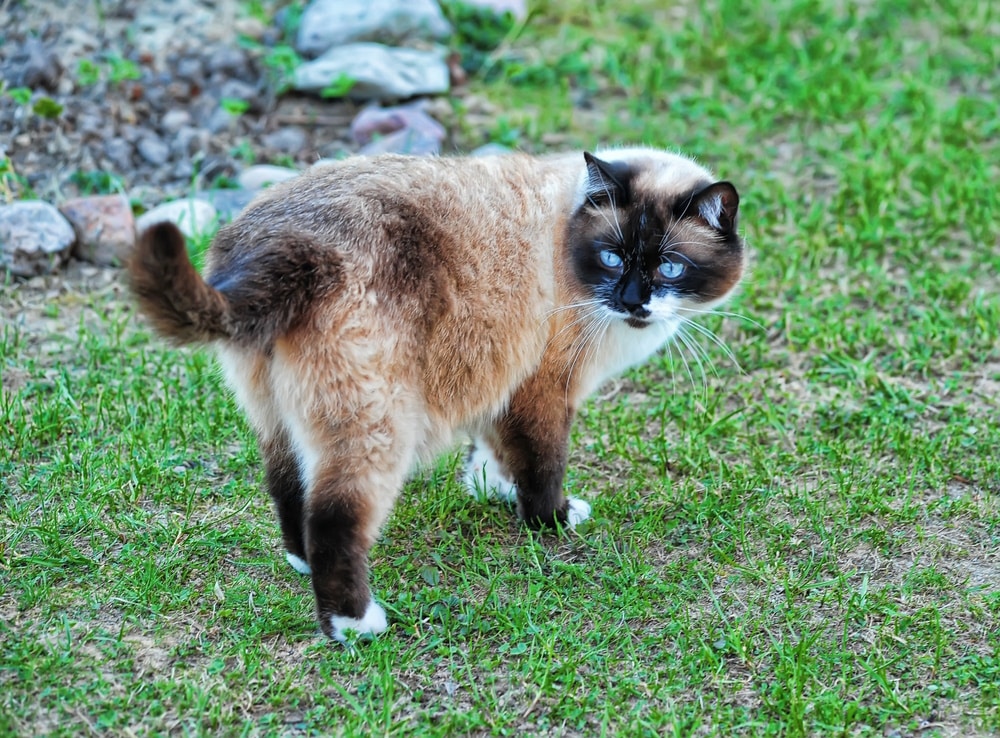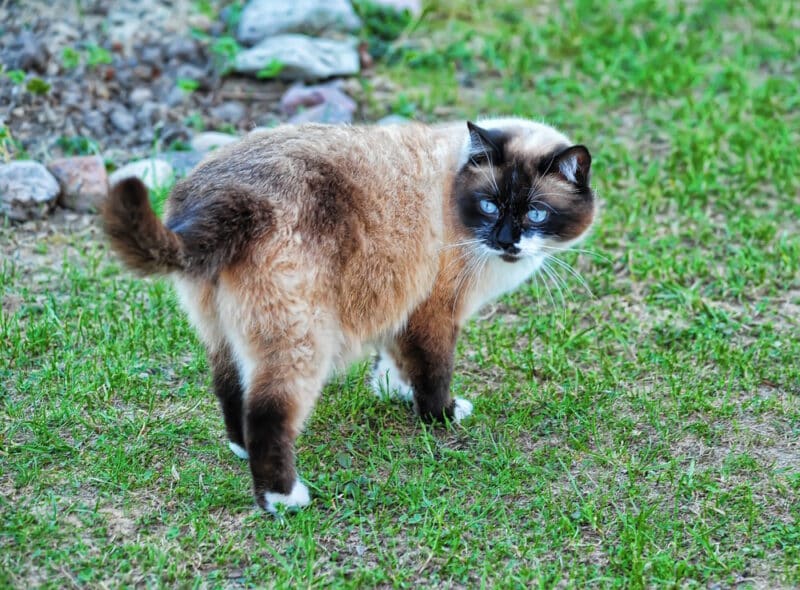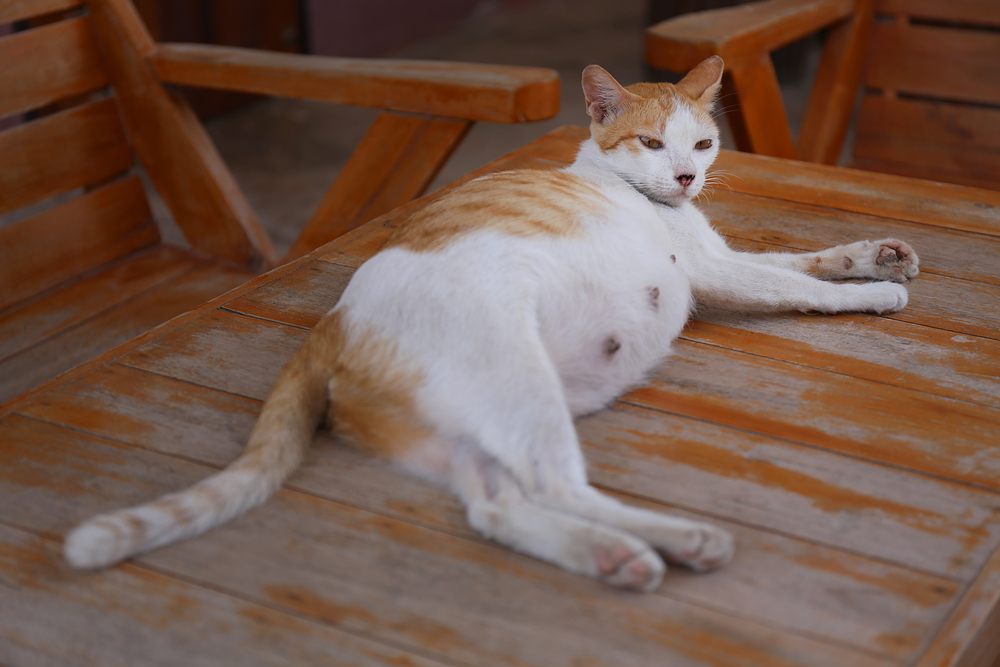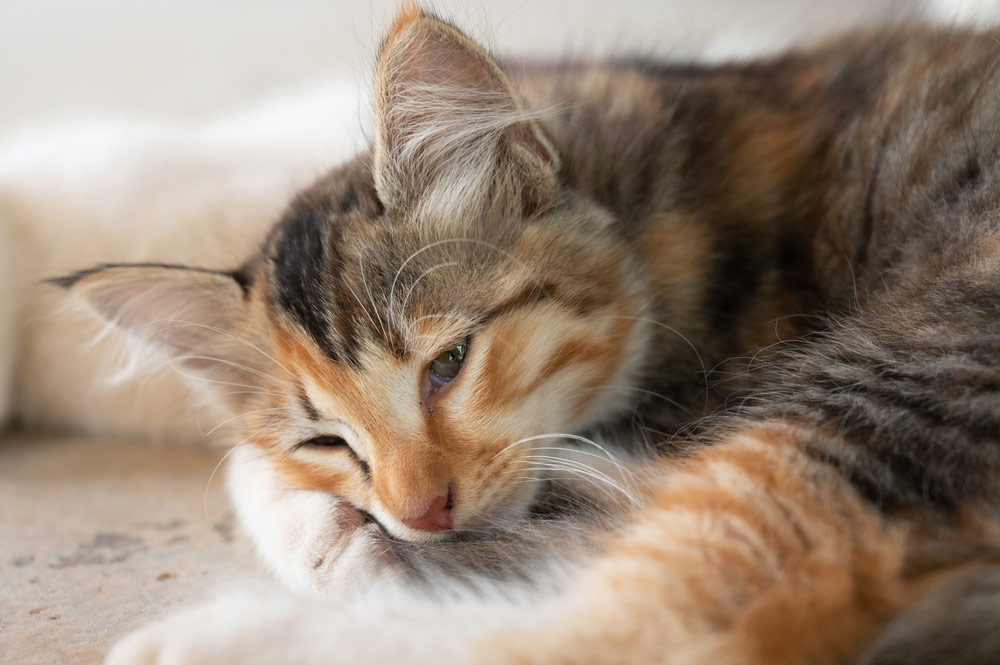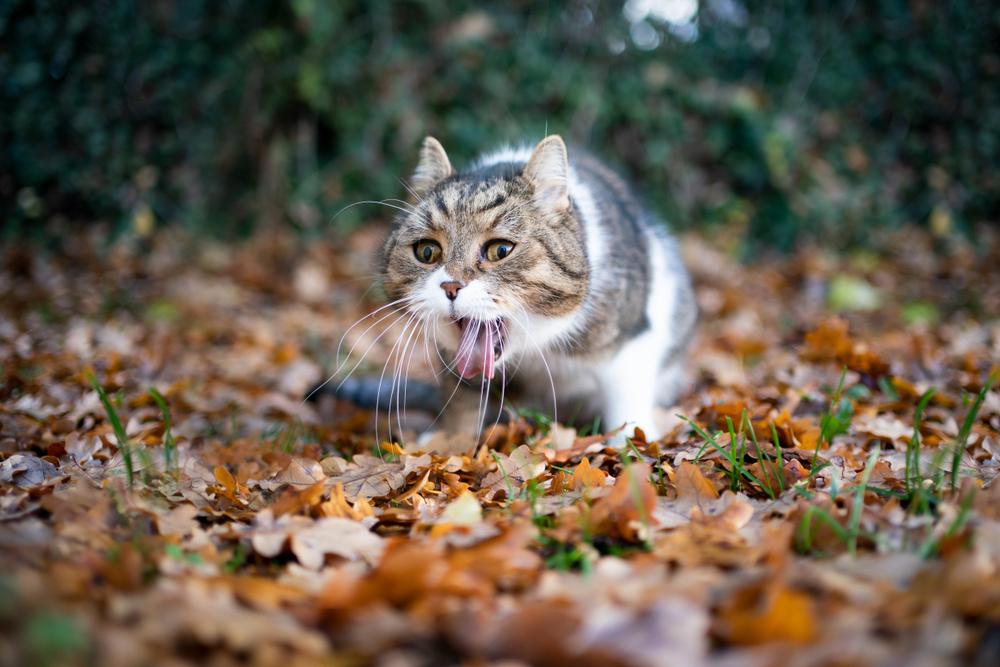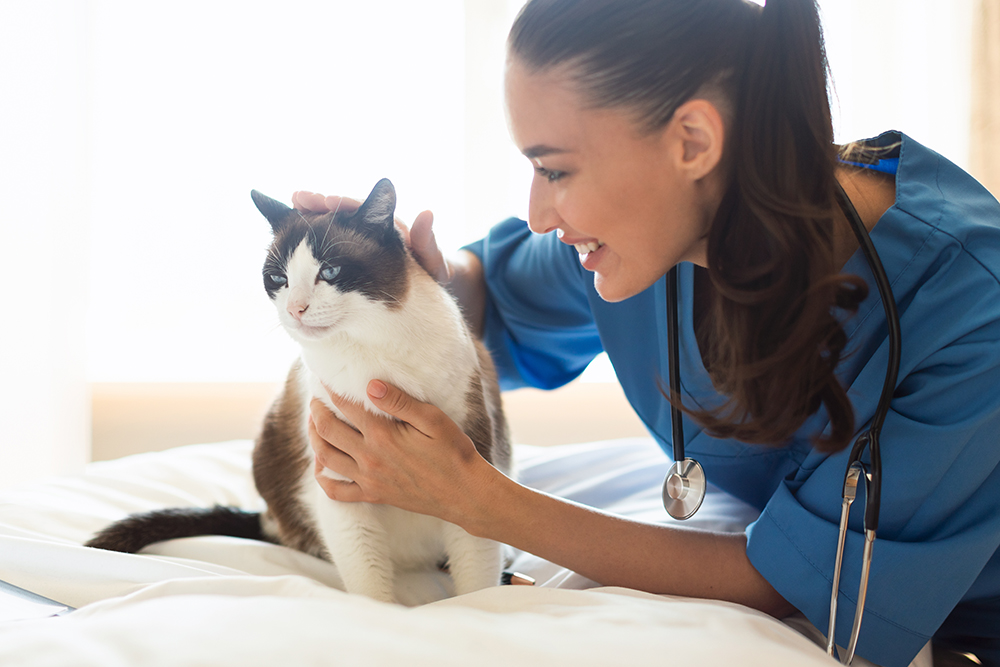The Snowshoe cat is a medium-to-large breed of cat. Originally a natural mutation found in a litter of Siamese kittens, the breed was further developed by crossing the individuals in that litter with American Shorthair cats. Most Snowshoe cats are a Siamese and American Shorthair cross; however, the breed can be developed by crossing a Siamese with other breeds of cats as well. They get their name from the four distinctive white paws, which is the signature breed trait. These cats are popular for their affectionate, playful, and sociable personality.
If you’re considering a Snowshoe cat, you may be wondering how much they shed. Fortunately, these cats are short-haired and have no undercoat, so Snowshoe cats don’t shed much.
Snowshoe Cat Grooming Requirements
The Snowshoe cat is a low-maintenance breed when it comes to grooming. They have a short coat and only have a single-layered coat, and therefore, healthy individuals only shed minimally. You will need to brush your cat at least once a week to remove dead hairs and prevent mats and irritation, however.
Because of the short coat and low shedding, a lot of people mistakenly believe the Snowshoe cat is hypoallergenic. While they may not shed enough to exacerbate cat allergies, they are not a hypoallergenic breed. In fact, no cat breed is a truly hypoallergenic breed, and any cat (even a hairless cat) can trigger one’s allergies. That being said, low-shedding breeds are thought to be more allergy-friendly.
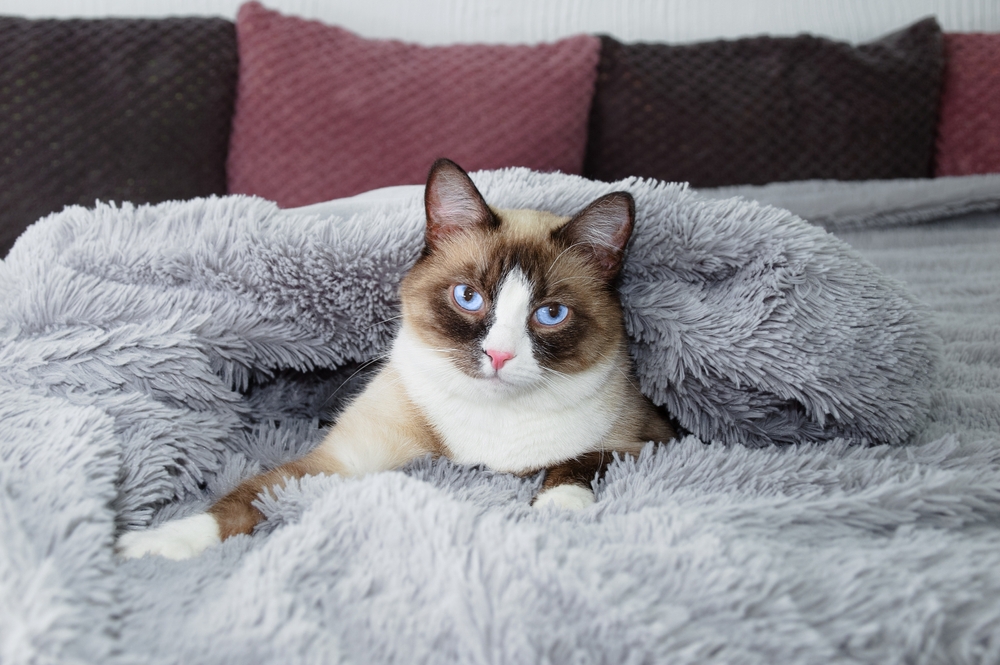
Why Is My Snowshoe Cat Shedding So Much?
Shedding is natural and necessary for your cat’s health, but that doesn’t make it any less frustrating. Some shedding is normal, but excessive shedding can cause problems.
So, how much is too much? The amount your cat sheds depends on their breed, fur type, and seasonal changes. It’s important to pay attention to your cat’s normal shedding pattern and knowing what healthy cat skin and hair looks like to identify a problem.
Though excessive shedding is itself a sign that your cat may need to be seen by a veterinarian, it’s also good to know other signs that might be associated with excessive shedding.
- Your cat has bald spots
- Your cat’s skin looks red, inflamed, moist, or has a foul odor
- Your cat’s skin has scabs or is bleeding
- Your cat is excessively scratching themselves
- Your cat is excessively grooming themselves
- Your cat’s fur feels rough to the touch
- Your cat’s fur coat looks very unkempt
- Your cat is developing hairball issues
Please note that this list isn’t exhaustive. If you notice these or other strange signs in your pet, it’s important to seek veterinary attention for them.
What Causes Excessive Shedding?
- Seasonal Changes: Cats shed more in the autumn and spring.
- Nutritional Issues: Poor nutrition or a nutritional insufficiency can impact your cat’s coat quality, leading to excessive shedding.
- Health Issues: Many medical issues can cause your cat to shed more hair than usual
- Behavior Issues: Some behavioral issues can lead to changes in grooming behavior, which can lead to excessive shedding.
What Do I Do When My Snowshoe Cat Is Shedding Excessively?
Medical conditions are the biggest cause for concern if your cat’s shedding patterns suddenly change. Typically, cats with normal shedding patterns will have a healthy coat and skin with plenty of shine, no odors, and no signs of skin irritation.
If your cat is shedding more because of medical causes, they may have a dull or thin coat, bald patches, rashes, or other abnormalities. Many health problems can cause this, including ailments involving other body systems. Therefore, if your cat seems to be shedding excessively, you should begin by having them looked over by your veterinarian to ascertain their health status. Cats are experts at masking their illnesses, so sometimes, even an apparently healthy cat may have issues which require medical intervention.
- Rule Out Medical & Behavior Issues: It’s very important to seek veterinary input if your cat seems to shed excessively. Your veterinarian may also give you advice on behavior issues your cat is showing.
- Consider Nutrition: At times, nutritional changes or supplements may help your cat. Certain commercial diets are designed to help with skin and coat maintenance. Alternatively, you can discuss dietary adjustments (for other diet types) with your veterinarian or a veterinary nutritionist.
- Explore Grooming Options: If your cat is not able to groom themselves properly, consider helping them as far as brushing and grooming is concerned. This can also be a great bonding activity!
- Reassess Your Home: Your cat may be shedding excessively due to something their skin comes in contact with. For instance, household cleaners can irritate your pet’s skin. You may need to come up with a strategy to remove your cat from a room when you’re cleaning it, and only let them back in when all cleaning solutions have thoroughly dried. Alternatively, you may consider switching products.
- Consider Air Filters: At times, your cat might be sensitive to something that is airborne, which may, on occasion, lead to issues such as excessive shedding in particularly sensitive cats. An air filter might be a great investment; it can also help catch animal hair!
- Be Patient: Treatments involving skin issues, dietary adjustments, and other habitual changes take some time before you see improvements. It’s important to remain patient when it comes to managing a fur coat issue on your pet.
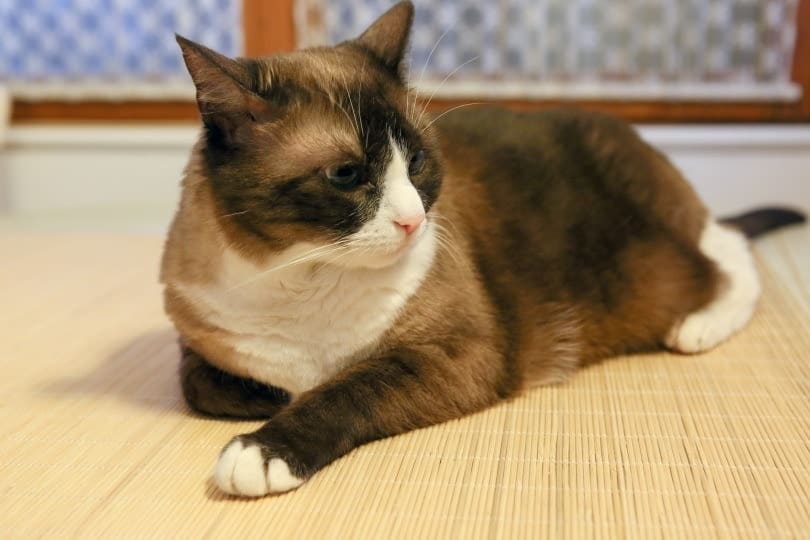
Tips to Reduce Cat Hair in Your House
As mentioned previously, it’s normal for cats to shed more in autumn and spring. During these seasons, the amount of hair that can build up in your house may become overwhelming at times. The following tips can help with keeping your home clean when your cat is shedding excessively.
It’s important to brush your cat regularly to remove loose hair and help your cat avoid ingesting too much of their hair.
- Clean More Frequently: This is pretty self explanatory. When you vacuum your house, focus more on carpets, couches, curtains, upholstery, your cat’s bed, perches, and cat towers. Cat hair sticks to fabrics more readily than other materials, and your cleaning should be focussed on these spots.
- Fabric Cleaning: Increase the frequency at which you wash your linens, carpets, clothes, and other fabrics.
- Lint Roller: It helps to have a lint roller around for your clothing and furniture.
- Air Filter Maintenance: An air filter can do wonders for helping with cleanup, as many filters can help catch loose pet hair. However, this also means that you’ll need to increase the frequency of maintenance on your filters.
- Groom Your Pet: During the seasonal shift, a professional bath from a pet groomer and frequent brushing of your pets can help keep excess hair shedding in control. As snowshoe cats are a single coat breed, they wouldn’t need a deshedding brush for their undercoat (since they don’t have one). However, they would still benefit from a quick brushing session on a daily basis.
Conclusion
Snowshoe cats have short hair and don’t shed a lot, but they will shed all year and more heavily during seasonal changes. Regular grooming and some lifestyle habits can help you keep the hair at bay, but if you notice excessive shedding, it’s important to talk to your vet and determine the cause.
See Also:
- Snowshoe Ragdoll Cat Info: Pictures, Temperament & Traits
- 5 Snowshoe Cat Colors & Patterns (With Pictures)
Featured Image Credit: Anna Krivitskaya, Shutterstock

